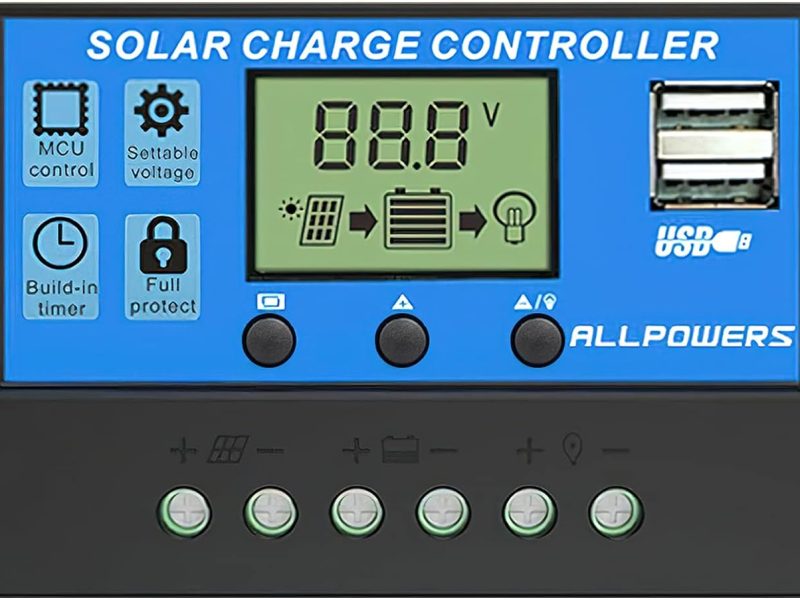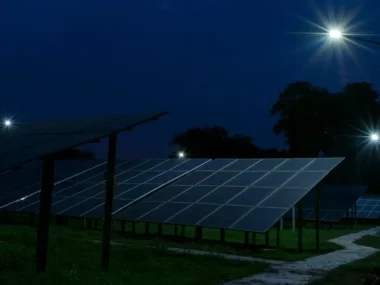How to safely Connect multiple charge controllers to one battery bank
Charge controllers are one of the greatest inventions of our time. They’ve redefined charging speed and safety for battery charging. The technology is widely used in solar systems, wind power, and other large-scale energy sources. Advanced solar controls are designed to allow for multiple controller stacks, such as two controllers connected to the same battery, and more.
They’re especially useful when charging batteries in an inverter setup or for larger batteries in a solar setup. They’re designed to make charging safer and more efficient. In this article, there are some guildline, you need to follow in connecting multiple charge controller.
-
Use appropriate wiring:
Use appropriately sized wires and cables to connect the charge controllers to the battery bank. The wire gauge should be sufficient to handle the combined current from all the controllers without overheating or voltage drop. Refer to the manufacturer’s guidelines or consult an electrician to determine the correct wire size.
-
Parallel connection:
Connect the output terminals of each charge controller in parallel to the battery bank. This means connecting all the positive terminals together and all the negative terminals together. Use bus bars or terminal blocks to simplify the wiring and ensure secure connections.
Ensure compatibility:
Before connecting multiple charge controllers to a single battery bank, verify that all the controllers are compatible with each other and with the battery bank. They should have similar voltage and charging characteristics to prevent conflicting charging protocols.
Match charge controllers to solar panels:
Ensure that the total solar panel wattage connected to each charge controller does not exceed the maximum input rating of the controller. This prevents overloading and potential damage to the charge controllers.
Proper Sizing:
Make sure the combined charging capacity of all charge controllers is sufficient to handle the charging needs of the battery bank. This includes both current and voltage compatibility.
What is a Charge Controller?
When understanding what a charge controller is, someone can easily understand its working principles.
A charge controller, often used in solar power systems, is an essential component that regulates the voltage and current coming from solar panels going into a battery. Its primary function is to ensure that the battery is not overcharged or over-discharged, thus maximizing the battery’s lifespan and maintaining its efficiency. Also charge controller is a device that protects a battery bank from overcharging by monitoring the battery bank and sending energy to a dump load when it is fully charged. It has capacities ranging from 4 to 100 amps, and multiple controllers can be used in parallel for larger battery systems.
There are two kinds of solar charge controller, (MPPT) Controller and (PWM) controller, the difference between PWM and MPPT charge controllers lies in their technologies. PWM charge controllers use pulse width modulation, which means they control the power input going into the battery bank using a digital controller. This method is fast and efficient but voltage regulation is not accurate.
In contrast, MPPT charge controllers use maximum power point tracking, which means they manually set the voltage at which the battery will be filled to its full capacity. They are slow and more precise but require more power input. The two types of charge controllers are used interchangeably depending on preference and purpose of use.
In handling projects, we practically chooses the mppt controller for multiple installations because of its efficiency and capabilities
How to Connect Multiple Charge Controllers
If you want to connect multiple charge controllers in parallel, it’s important to understand how they work. Each solar charge controller will sense the same internal resistance of the battery bank and input the same amount of current. The charge controller then provides protection for the battery bank by shutting off when the battery voltage gets too low and turning on when the battery voltage reaches a pre-determined level.
Connecting multiple charge controllers in a solar power system can be necessary when you have a large solar array divided into smaller arrays or when you’re dealing with higher power systems. The process involves ensuring that each charge controller operates independently and efficiently. There are some basic guide to connecting multiple charge controllers:
1 System Sizing and Design:
- Determine the total power output of your solar array and the maximum current it can produce.
- Select charge controllers that can handle the combined power output of your solar panels.
- Consider the type of charge controllers (PWM or MPPT) and compatibility with your solar panels and batteries
2 Battery Connection:
- Connect the positive (+) terminal of each charge controller to the positive terminal of the battery bank.
- Connect the negative (-) terminal of each charge controller to the negative terminal of the battery bank.
3 Controller Configuration:
- Configure each charge controller independently according to the specifications provided by the manufacturer.
- Set the charging parameters such as battery type, charging voltage, and temperature compensation as per your battery manufacturer’s recommendations
Some tips for Safely Connecting Charge Controllers
A charge controller is a vital component of solar power systems to prevent overcharging of batteries. It’s a smart device that monitors incoming solar power and outgoing battery voltage and switches between the two to maintain a precise voltage for solar power. A charge controller also protects batteries from excessive current, which prevents damage to battery wiring and reduces the possibility of your solar panel inverter igniting.
While using a charge controller can help you save money and the environment, you must follow few guidelines to secure its safety. You must use a charge controller with an input voltage of 12-48V, which can be connected to multiple solar panels of 12-24V or bank battery of 12-48V or higher.
Additionally, maximum power point tracking (MPPT) solar charger can be used to get the required current from solar panel, without affecting its efficiency. Finally, consider purchasing a charge controller with built-in battery protection features such as temperature monitoring, over-charging protection, and reversed-voltage protection.
Reasons why using Multiple Charge Controllers.
- Why use multiple charge controllers? Because of practical needs and design feasibility
- A charge controller is essential for safely and effectively charging batteries in off-grid solar systems. A single charge controller can’t be expected to provide consistent voltage or current to multiple battery banks. Instead, you should use a parallel control system with multiple charge controllers. This will ensure consistent voltage and current across all of your batteries, as well as balance the bank’s overall voltage and resistance.
- Appropriate balancing of the battery bank is necessary for an extended lifespan of batteries, and “balanced charging” eliminates this issue by evenly distributing the resistance between connections across each battery.
- Parallel control systems are more efficient than basic charge controllers, so you can use them to charge larger solar battery systems without sacrificing safety or efficiency.
- Flexcharge is a proprietary scheme that uses the way inM voltage rises and falls as the current is switched on and off to control the switching. This allows charge controllers to detect when a battery reaches fully charged, minimizing the chance of overcharging, which is important for maintaining battery health and longevity.
Benefits of Using Multiple Charge Controllers
– Using multiple charge controllers can offer a number of benefits to off-grid power systems, such as redundancy in the event of an outage and the ability to provide optimal charging conditions for larger solar arrays.
- A single controller can monitor and regulate two batteries at the same time, offering users two charging options.
- This also allows for parallel connect of charge controllers throughout a battery bank, providing a single battery bank with the ability to power two or more charge controllers.
- Charge controllers offer additional features such as charge status displays, data logging, automatic battery equalization charging, and generator starting.
- Overall, they are an essential part of any solar power system to ensure that it provides adequate power when needed.
Finally, using multiple charge controllers in a renewable energy system can still offer several benefits, stating below.
Increased Efficiency:
By distributing the workload among multiple charge controllers, you can optimize the charging process for each section of the system. This can result in higher overall efficiency, as each controller can focus on managing the charging process for a specific subset of solar panels or battery banks.
Scalability:
Multiple charge controllers allow for easier system scalability. As your energy needs grow, you can add additional solar panels or battery banks with their own dedicated charge controllers without overburdening a single controller.
Flexibility in System Design:
Different charge controllers may have specific features or capabilities that make them better suited for particular tasks or components within the system. Using multiple controllers allows you to tailor the system design to maximize performance and efficiency.












